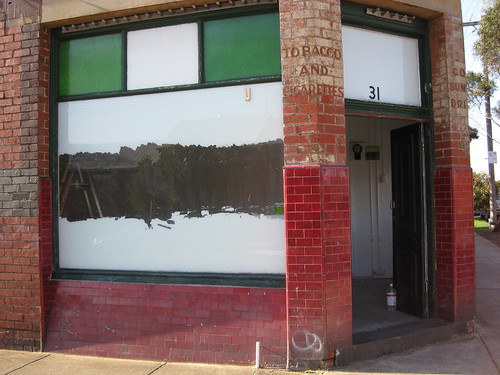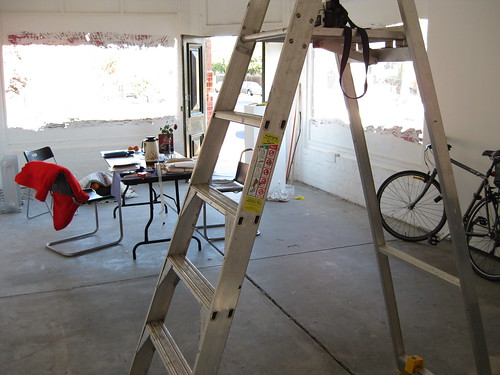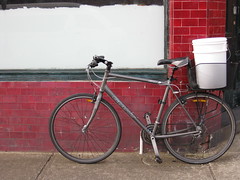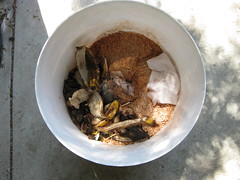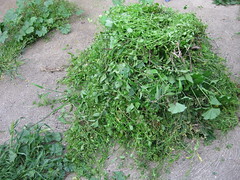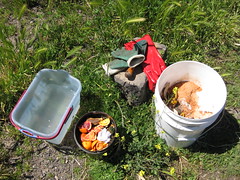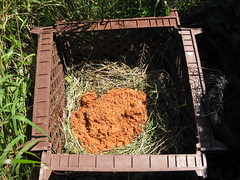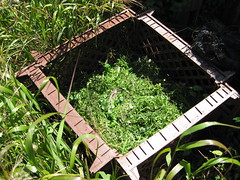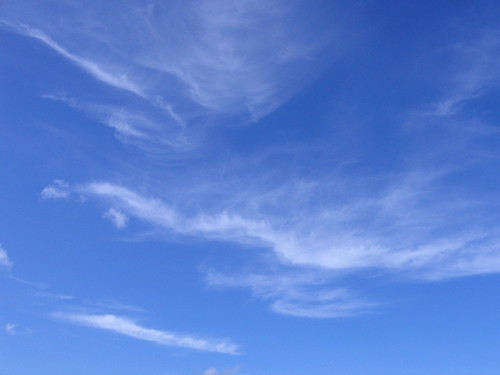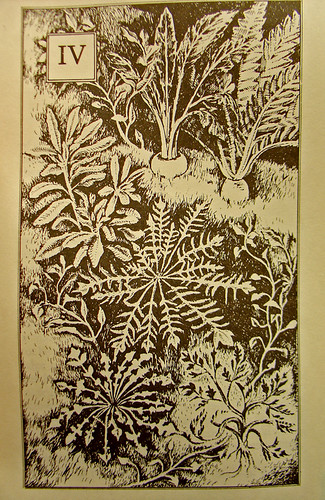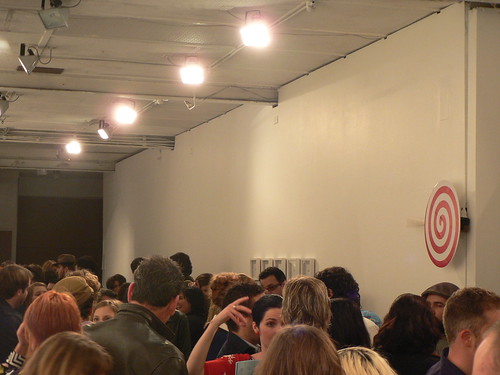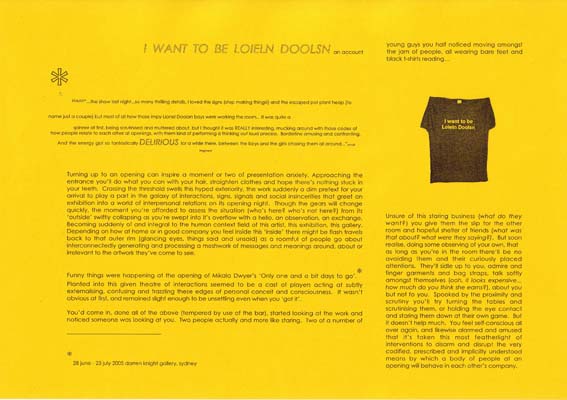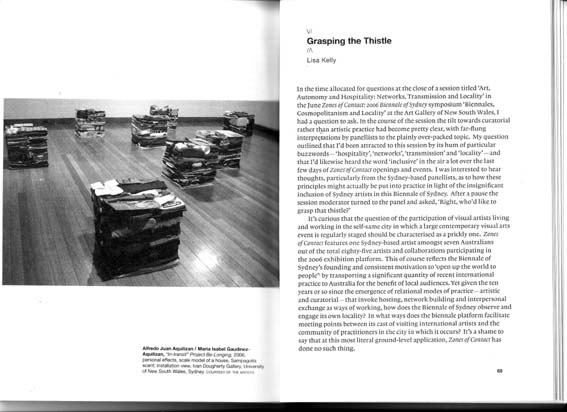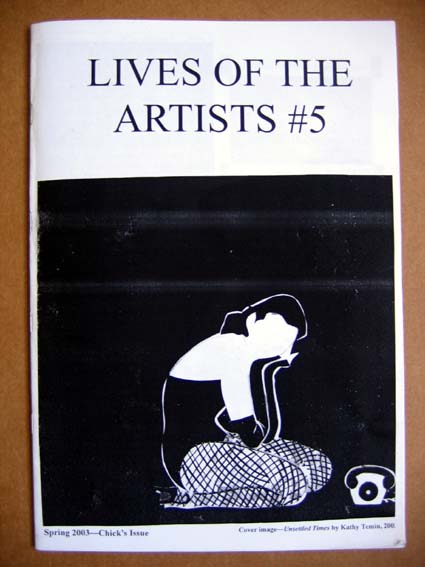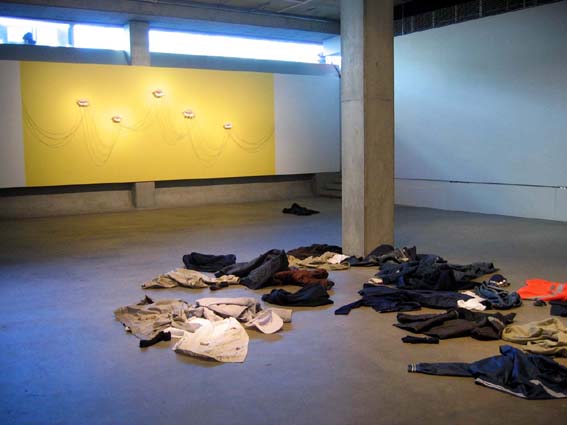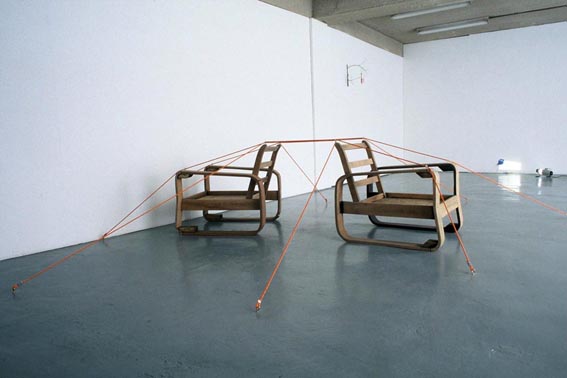
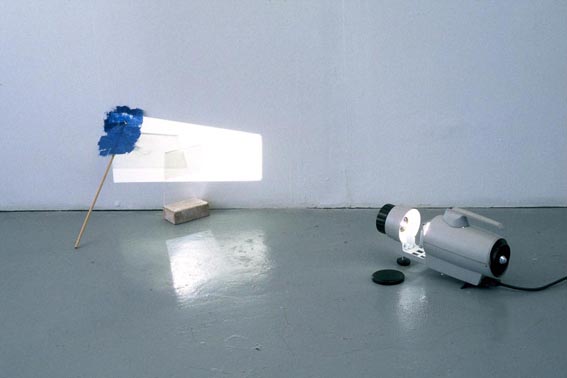
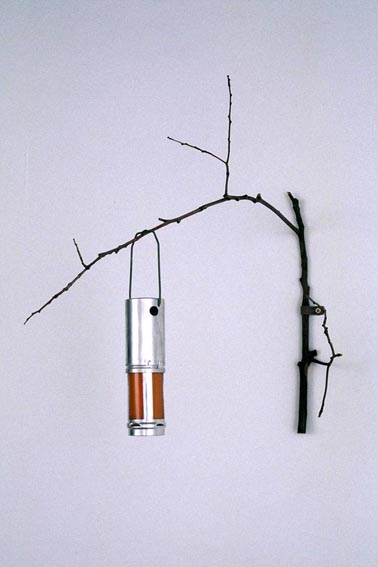
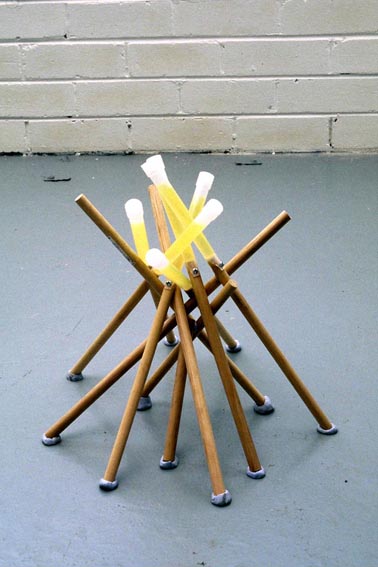
Tentcraft
Lisa Kelly & Alex Gawronski


SOUTH
30 march – 10 april 1999
Sydney
1. Life Security 1999 (with Alex Gawronski)
found chairs, nylon rope, dyna-hooks, hardware
2. Ljus Och Viss Varme 1999
twig, camping lantern, citronella candle, hardware
3. Cobweb 1999
projector, spider, glass slide, plastic, dowel, acrylic, cork, adhesive mesh
4. Burning Desire 1999
cyalume light sticks, dowel, blutack, hardware
[all photos: Christopher Snee]




catalogue text
Alex Gawronski & Lisa Kelly (italics)
A working motivation unravelled from the container of a word.
t e n t c r a f t
faded advice soon re-developed amid Parramatta Rd.
Thinking of movement, a conflict of mobility and stasis,
and the parallel world of stuff that crafts a migration elsewhere.
Camping is a word embroidered with numerous associations. It is inscribed with various international codes that nevertheless belie a desire for universalism. It is colour coded, bound up yet it suggests escape and freedom, freedom from life. When we take off we hope equally to get lost, without necessarily abandoning the familiar texture of our lives back home. Indeed it is familiar difficulties of the emotional, financial and social kind that we seek to replace with the difficulties of a sort we can readily overcome. These are primarily practical difficulties. What they represent is an A-Z guide on how to: stay dry, stay warm, keep cool, avoid bites, avoid falls, maintain orientation, remain mindful of the environment and of our co-travellers and of ourselves. At the same time we seek to erase temporarily our local presence and to become (if only partially) wild. The camper seeks a reunification with those things that he or she takes for granted, those things technology keeps us safe from whilst seeking to maintain our complicity with our natural selves.
Continue Reading »

